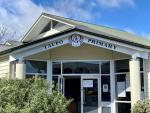According to the United Nations there are, today, 193 countries in the world and, notwithstanding the levelling effect in recent decades of easy travel and instant communication, their diversity remains astounding...countries vary in size from over 1 billion to as small as 11,000 (Nauru); there are countries of significant wealth and those suffering abject poverty; secular states and states which follow a strict religious code...there are democracies and autocracies and everything in between.
Notwithstanding this incredible diversity, almost all of them share one thing in common - they adopt a national flag as a symbol of recognition, of statehood. And this is where flags begin to get fascinating and warrant more reflection than perhaps we give them. We often just accept them as a given...without appropriately reflecting on how powerful they are as symbols variously of goodness, stress, newness or, least appealingly, aggression or threat.
I suspect all of us would regard what is often recorded as the world's oldest flag (the red and white flag of Denmark - dating back to 1219) as a flag representative of a region generally, namely Scandinavia, which inclines to 'goodness' - liberalism, tolerance and inclusion. And, of course, today the proud blue and yellow flag of the Ukraine is recognised everywhere as the symbol of a country under terrible, unwarranted, stress. Similarly new flags, which have emerged in recent decades variously as a result of decolonization, the collapse of the former USSR or individual struggles for independence (such as Timor Leste), are a constant reminder of the fragility and fluidity of nation states. And it is worthy of us to keep commending Germany (today a good country) for its vigilance in enforcing the ban on the swastika - a horrific symbol of the most awful period in that country's history.
All this to suggest that flags are extremely powerful symbols but are not uniformly good or bad...their character and how we view them always wants to be seen within the context of their use. And this brings me to the charm of the story to hand...the constantly changing flags flying over Taupo Primary School.
I'm not sure how many of you will have noticed but each day, if you drive past the school grounds, you will see a different flag flying proudly over the playground. It intrigued me - as it will have others - and I wandered in and asked the background. It's an initiative which has been in place for a while...a student run initiative whereby each day a group of students decide to fly the flag of the 'initial country of origin' of one of their own. What a lovely idea - and above and below is a representative sample of snaps taken by me over a six day period. The last flag pictured is different in context but it is consistent in terms of intent (namely respect). It is our own flag flying at half-mast by the school/students to mark the passing of Her Majesty The Queen...and at the base of the flagpole the children placed camellias seeking, in their own way, to capture the significance of this momentous transition.
In a world seemingly becoming less tolerant, more authoritarian, more suspicious and fearful of 'others'...it's rather delightful to see here a student body using the powerful symbol of flags for a good purpose...to acknowledge and celebrate diversity...to be welcoming and gracious to those who are new...to be great Ambassadors for one of New Zealand's most cherished characteristics - namely manaakitanga. Good on them.
Credit: Rupert Holborow.
(Footnote: Taupo Primary, sits on land gifted over 125 years ago by Ngati Tuwharetoa for the purposes of education. It seems appropriate that that early act of manaakitanga is carried forward today by this one).

